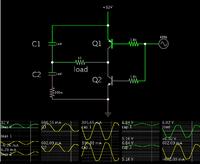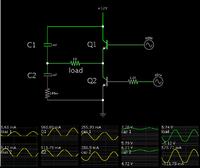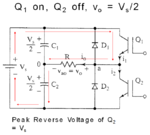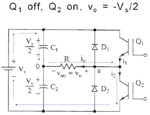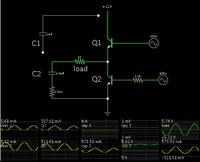Eshal
Advanced Member level 1
- Joined
- Aug 29, 2012
- Messages
- 470
- Helped
- 16
- Reputation
- 32
- Reaction score
- 15
- Trophy points
- 1,298
- Location
- Nowhere :)
- Activity points
- 5,149
Hello experts!
Here is the picture of Single phase half bridge inverter with R load only
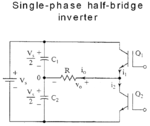
Here is waveforms with R load
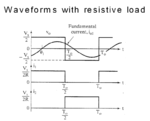
My task is to design this inverter with proper values of C and proper Transistors, initially by choosing any Vs value and R value.
So, what if I start my designing by choosing Vs=12v? And if I choose R=10ohm.
I am not going to design it for any hi-fi values. Just small values of Vs and R. So what should be those values?
Thanks experts.
Here is the picture of Single phase half bridge inverter with R load only

Here is waveforms with R load

My task is to design this inverter with proper values of C and proper Transistors, initially by choosing any Vs value and R value.
So, what if I start my designing by choosing Vs=12v? And if I choose R=10ohm.
I am not going to design it for any hi-fi values. Just small values of Vs and R. So what should be those values?
Thanks experts.
